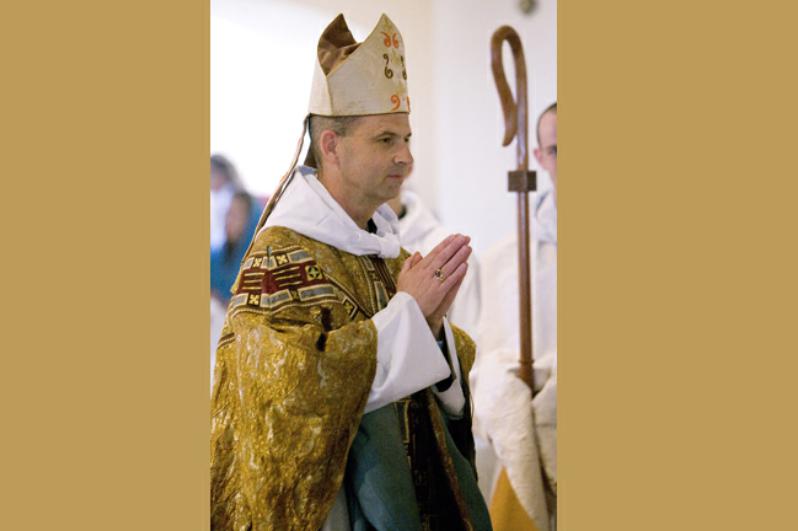Rebuilding in the Heartland
It's amazing what happens in what many people call "flyover" country, where many Catholics quietly are going about the work of rebuilding in the nation's heartland. On a recent road trip through Nebraska, Iowa, Missouri, Kansas, and Oklahoma, my family explored a corridor running through the center of the country, home to many vibrant communities that can serve as models in our efforts to live the faith and share its beauty.
Setting out from Denver, we followed the South Platte River into Nebraska, leading us toward Lincoln, with its Newman Institute for Catholic Thought & Culture, founded by Bishop James Conley. Housed at the Newman Center, with its stunning church, it offers University of Nebraska students an immersion into the Great Books. After a family reunion in southern Iowa, we headed south to Missouri, praying alongside of the nuns with heavenly voices at the Abbey of Our Lady of Ephesus in Gower (which has released many popular CDs). Their average age appeared below 30, with enough vocations for a new foundation, the Monastery of St. Joseph in Ava, Missouri. From there, we dropped in on some friends in Atchison, Kansas, the home to Benedictine College, a major site for collegial renewal, perched on the bluffs overlooking the Missouri River. We headed further south to Fort Scott to check in on developments at St. Martin's Academy, a boarding school for high school boys, which incorporates regular farm work and hands-on experiences. Finally, we landed at Clear Creek Abbey, outside of Tulsa, Oklahoma, where I am an oblate. I gave a talk to the monks on the relation of beauty and worship, and my four boys and I were able to enjoy the abbey's wholesome food grown and produced on the abbey grounds. The monastery was founded in 2000 with just 12 monks, and they are now approaching 60, with a new wing of the monastery rising, alongside of their half-completed Romanesque church.
Like these growing institutions, there is a story to be told about Catholic efforts to rebuild Christian culture. Todd Hartch has begun to paint this picture in his "A Time to Build Anew: How to Find the True, Good, and Beautiful in America" (Angelico, 2021). I actually found the book during our trip on the coffee table of my good friend, Dr. Richard Meloche, head of the Alcuin Institute for the Diocese of Tulsa, which steeps teachers and catechists in the treasures of Catholic culture. Hartch points out that even though many committed Catholics may read books or study theology, "they do not know how to spend their time. The culture is declining noticeably, their local church offers little of interest, and the world of politics seems crass and unchangeable, so they work and read and pray and attend Mass but make no difference to the world around them. They know they should be doing something, but they do not know what to do or how to do it. They might know what is true, but they do not know how to communicate or teach truth. They might know what is good, but they do not know how to do good, or are afraid to start. The ugliness and banality of their world drives them to despair, but they do not know how to beautify it" (14).
To help us reflect on what to do, his book identifies "those who have lived well so that 21st-century American Catholics can follow their example. Of course, your own gifts and talents are unique, as is your specific situation, so you should not copy them blindly or mechanistically. Rather, study them, take inspiration from them, and adapt their insights and methods to your circumstances" (2). His examples are Frederick Hart's sculpture, the Sisters of Life, the Dominicans of the St. Joseph Province, Franciscan University of Steubenville, the Notre Dame School of Architecture, and mayor Joe Riley's work revitalizing Charleston.
Chapter three focuses on one of the most impactful education programs of the last century, one that influenced many of the places we visited on our trip: the Integrated Humanities Program (IHP) at the University of Kansas. Running throughout the 1970s and spearheaded by John Senior, Dennis Quinn, and Frank Nelick, IHP took undergraduates through four semesters of a living immersion into the great tradition. Students read the Great Books, accompanied by humanizing experiences that included memorizing poetry and folk songs, stargazing, speaking Latin, waltzing and touring Europe. Students learned poetically through a direct immersion into reality that reawakened their minds and imagination in wonder. This awakening led more than 200 of them into the Catholic Church, inspiring vocations (including founding monks of Clear Creek) and many other initiatives to pass on IHP's legacy, such as the Newman Institute and St. Martin's Academy.
As we consider what we can do, the wonderful work of Catholics in the heartland should encourage and inspire us. We, too, can rebuild, if we gather likeminded people together to pursue the true, the good and the beautiful. It's amazing the impact that even one strong community can have.



















